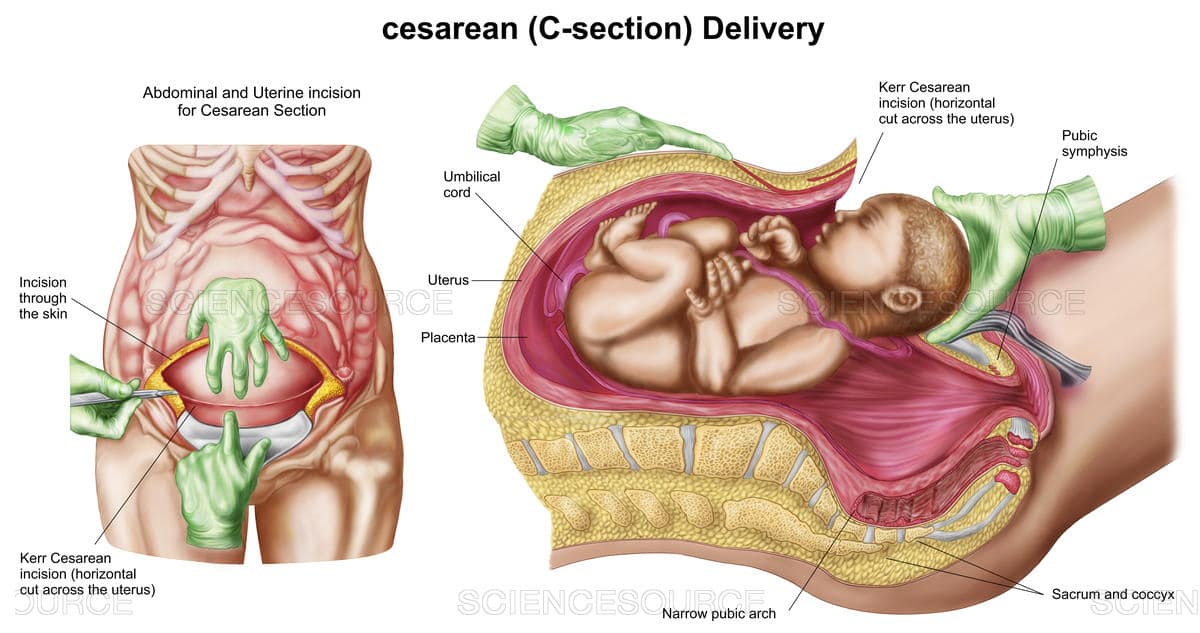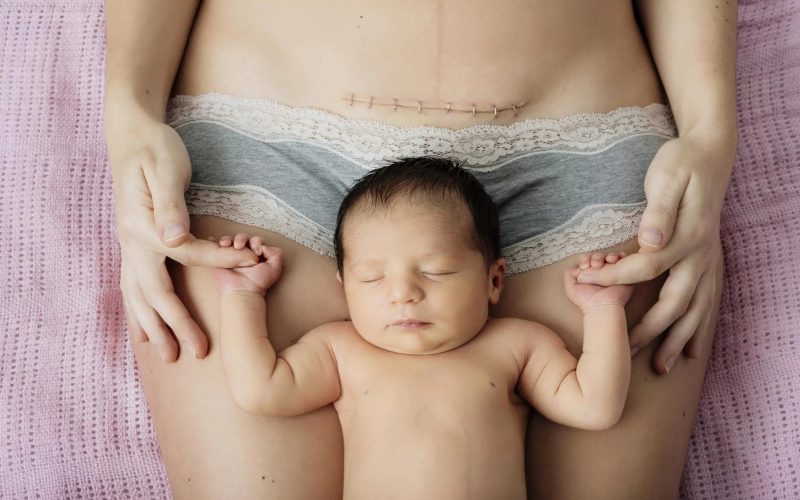A C-section, also referred to as cesarean delivery or cesarean section, is the surgical procedure carried out to deliver a baby. This involves an incision in a mother’s abdomen and the uterus.
C-section is a conventional means of childbirth, and according to the Centers for Disease Control and Prevention, it has been used to deliver many babies in the United States.
Generally, cesarean sections are often avoided when the baby isn’t up to 39 weeks. This gives the baby enough time to develop correctly in the womb.
However, when a complication arises, a c-section would have to be performed before the baby is 39 weeks.
Why is a C-section Done?
A c-section is commonly performed when there are complications with pregnancy, especially when birth through the vagina becomes difficult, which can put both mother and child at risk.
Most times, the procedure is planned before delivery proper, but it is often performed when complications occur during labor.
Other reasons why C-sections is needed include the following:
- When the baby’s head becomes too big to pass through
- When the baby displays developmental complications
- Early pregnancy issues
- Delayed labor
- Transverse labor (When the baby comes out shoulder first)
- Breech birth (When the baby comes out feet first)
- Low oxygen supply to the child
- Complications with the umbilical cord
- A complication with the mother’s health, which may include high blood pressure, coma, or others
- Former cesarean delivery
- When the mother has genital herpes, to avoid the risk of transmission
- A complication with the placenta that could include placenta previa or placental abruption
The Risks of a C-section
C-sections are becoming more widely accepted, but still, it is a procedure that could be complicated for both mother and child.
The most preferred form of childbirth is still the natural form, especially since it has minimal risk of complications.
The risks associated with cesarean section include:
- Bleeding
- Infection
- Blood clots
- Extended recovery time when compared with vaginal delivery
- Possible injury to the baby during the surgery
- A maximized complication for future pregnancies
- Surgical cuts to other vital organs
- Hernia, adhesions, and other problems of abdominal surgery
- Breathing complications for the baby, especially when if the surgery is done before the baby is 39 weeks old
You must discuss it with your doctor before the delivery date is due. Your doctor should be able to confirm if there would be any complications for you or your baby that may require a C-section.
Preparing for a C-section
Suppose you have reached a conclusion with your doctor and decided that a cesarean section is the best delivery option. In that case, you will be presented with a complete guide on minimizing the risk of complications after a c-section.
Prenatal checkups would be required, as with all forms of pregnancy. This would make it easier to determine if a cesarean operation is required.
Your blood type will be recorded if a blood transfusion is needed during the procedure. Although blood transfusions are hardly needed during a c-section, your doctor should prepare for all possible complications.
It’s best to prepare for the unexpected, even if a c-section isn’t on the list. Ensure to discuss all possible risk factors for a c-section with your doctor during prenatal appointments. Also, discuss ways to lower them.
Since a C-section requires more recovery time than a normal birth, getting extra hands to help with chores around the house can be very helpful.
You would need enough energy to recover after your surgery, and your baby would also need some attention.
Performing a C-section

You may be required to stay in the hospital for up to three or four days while you recover from the operation.
Before the surgery, your doctor would have your abdomen cleaned as they’d prepare you for intravenous fluid through your arm.
This would make it easier for the doctors to administer medication and any necessary fluids.
A catheter would also be put into your bladder to make it easy to empty during the procedure.
The three types of anesthesia administered to delivering mothers include the following:
- Epidural: This is standard anesthesia used during vaginal and cesarean deliveries. It is injected into the mother’s lower back just outside the sac of her spinal cord.
- Spinal block: This type of anesthesia is injected into the sac around the woman’s spinal cord, which helps to number the lower part of her body.
- General anesthesia is used in emergencies and helps to put a woman into a painless sleep.
After a woman has been adequately medicated, the doctor would create an incision right above the pubic hairline. The incision is horizontally across the pelvis, but it may be vertically in case of emergencies.
An incision would be made into the uterus by the doctor after an incision is done to expose the abdomen. The incision area will be covered during the operation so the woman won’t see what is happening.
The baby can then be removed from the mother’s uterus after the second incision. Attention would first be given to the baby by having their mouth and nose clear of fluids.
This would also involve clamping and cutting the cord. Hospital staff would then attend to the baby to ensure they are breathing correctly as they prepare to give the baby to the mother.
If the agreement involves you not having any more kids and having signed consent, of course, your doctor can have your tubes tied after delivery.
The uterus can then be repaired with dissolving stitches, and the abdominal opening closed with sutures.
Post-C-section
A mother and her newborn may be required to remain in the hospital for at least three days after a c-section. The mother would remain on an IV after surgery.
This allows for the proper administration of painkillers into her bloodstream while the anesthesia leaves the body.
The mother would also be encouraged to get up and move around. This exercise is to prevent constipation and possible blood clots.
A doctor or a nurse can show the mother how best to position her baby for breastfeeding. This is to avoid additional pain from areas where the incision is done.
Although your medical doctor would recommend some home care steps after the procedure, new mothers should note the following:
- Avoid having sex for about 4 to 6 weeks
- Use painkillers when required
- Assume a proper posture to support your stomach
- Be sure to get enough rest, especially in the first week after surgery
- Take plenty of fluids, preferably water. This helps to replace the bodily fluids that were lost during the C-section
- Ensure to contact your doctor if you are experiencing symptoms of postpartum depression. This could include overwhelming fatigue or extreme mood swingsConsult with your doctor if you notice any of the following:
- Pain when you are urinating
- Breast pain followed by fever
- Vaginal discharge that smells bad or bleeding with heavy clots
- A possible infection could be accompanied by redness, swelling, a fever of over 100 °F, or discharge from where the incision was made.








